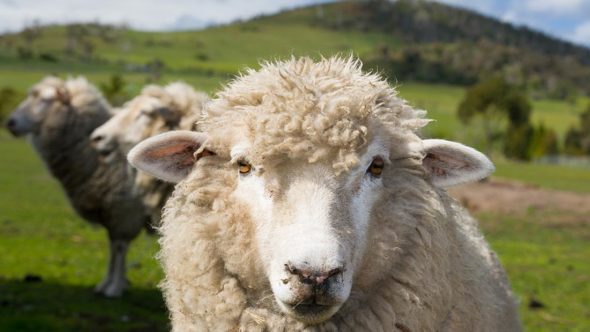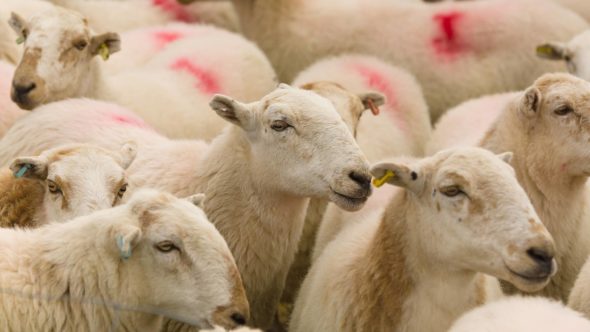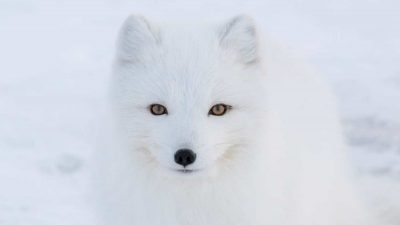Wool
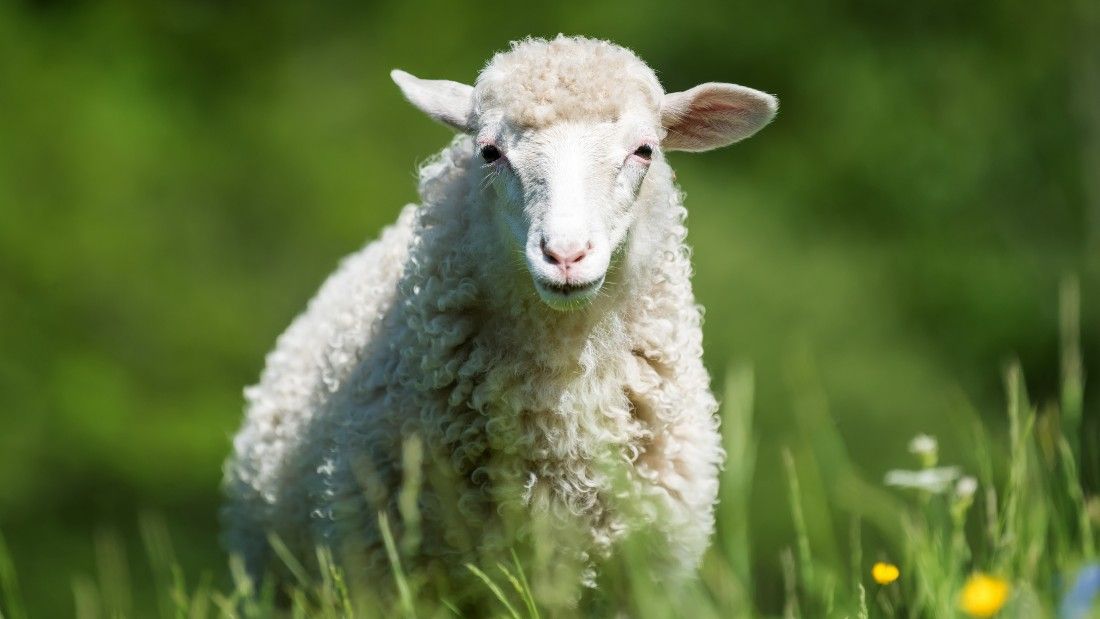
Wool is an animal fibre that forms the protective covering (fleece) of sheep and other hairy mammals, such as goats and camels. Wool has been used in the UK since the domestication of sheep during the Bronze Age.1Roberts, M. 2019. History of Sheep & Wool in Britain. WIld Fibres. Available: http://www.wildfibres.co.uk/html/sheep_history.html#:~:text=Ryder%2C%20who%20has%2written%20extensively,Age%20appears%20to%20be%20Soay [Accessed 3 June 2021]. It’s still used today to make clothing, carpets, bedding, insulation, upholstery, soft furnishings and for crafts – mostly felting, knitting and crochet.
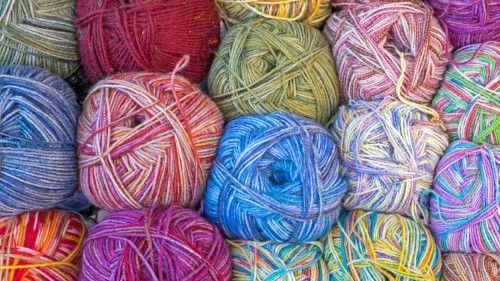
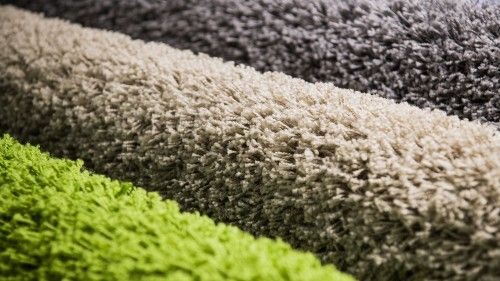
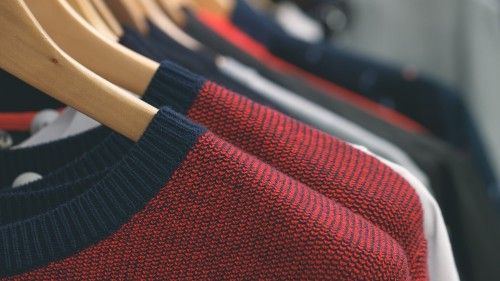
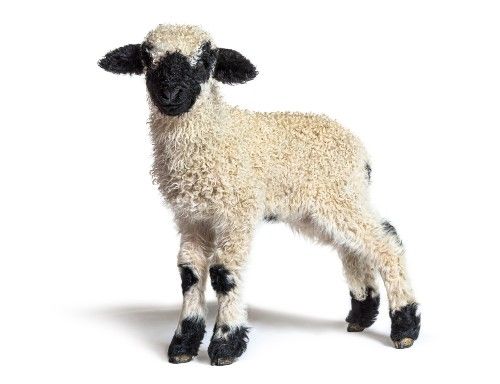


Around the world, wool is taken from goats, alpacas, llamas, camels and rabbits. In the UK, it is predominantly sheep who are exploited for their wool. At least a third of it comes from lambs who have been killed for meat,2Jordan, S. 2008. Everything You Ever Wanted To Know about Sheep But Were Afraid To Ask. Daily Info. Available: https://www.dailyinfo.co.uk/feature/2885/everything-you-ever-wanted-to-know-about-sheep-but-were-afraid-to-ask [Accessed 22 July 2021].3Clark, A. 2013. Hard Facts About a Woolly Industry. Peta UK. Available: https://www.peta.org.uk/blog/hard-facts-about-a-woolly-industry/ [Accessed 22 July 2021]. and the rest is taken from breeding ewes. ‘Lambswool’ which either comes from lambs slaughtered for meat or from the first shearing of a lamb kept for breeding – is considered softer and therefore more desirable for clothing than the wool of older sheep.
The UK farms 106 different breeds of sheep4Pollott, G. 2012. The breeding structure of the British sheep industry 2012. EBLEX. Available: https://www.farminguk.com/content/knowledge/British%20Sheep%20Breeding%20in%202012(5313-4650-4940-808).pdf [Accessed 3 June 2021]. and depending on the breed’s characteristics, they are farmed in three different ways: hill, upland and lowland.5National Sheep Association. The UK Sheep Industry. NSA. Available: https://www.nationalsheep.org.uk/uk-sheep-industry/sheep-in-the-uk/the-uk-sheep-industry/ [Accessed 3 June 2021]. All sheep breeds eventually end up being killed for meat. All males (except those kept for breeding) and lowland females (see below) under the age of one are killed for lamb, and when older ewes (female sheep) stop producing as much wool or their fertility drops, they are killed for cheap meat.
Hill breeds include Welsh Mountain, Swadedale and Scottish Blackface. They are considered hardy and very adaptable – and have to be to survive in the harsh Welsh and Scottish mountains. When older female sheep have given birth several times, they are often transferred to the uplands to continue breeding in an ‘easier’ environment. Hill breeds are considered ‘dual-purpose’ sheep – a term which betrays how little their individual lives are valued by farmers and how they are instead seen as objects. Although they were once bred specifically for wool and milk, nowadays they are mainly bred for meat.
Upland breeds include Bluefaced Leicester, Wensleydale and Devon and Cornwall Longwool. These breeds are not quite as hardy as the hill breeds so are farmed in milder conditions. The uplands “traditionally have accounted for half the output” of sheep for meat and wool.6Hopkins, A. & Lobley, M. 2009. A Scientific Review of the Impact of UK Ruminant Livestock on Greenhouse Gas Emissions. University of Exeter. Available: https://core.ac.uk/download/pdf/6507948.pdf [Accessed 3 June 2021]. The ewes are kept longer for their wool and are often transferred to the lowland for breeding or fattening, while all male lambs are killed for meat. As most of their diet comes from grazed grass rather than feed, upland sheep have a higher methane emission than lowland breeds.6Hopkins, A. & Lobley, M. 2009. A Scientific Review of the Impact of UK Ruminant Livestock on Greenhouse Gas Emissions. University of Exeter. Available: https://core.ac.uk/download/pdf/6507948.pdf [Accessed 3 June 2021].
Lowland breeds include Texel, Suffolk. Charollais and Oxford/Hampshire/Dorset Down. These breeds grow faster and fatter than their uphill counterparts, therefore producing more meat in less time. Almost all lambs are bred for their flesh, as replacements for breeding are taken from the upland. Wool is taken from the ewes until their fertility drops and the quality of their wool degrades, when they are killed for cheap meat.
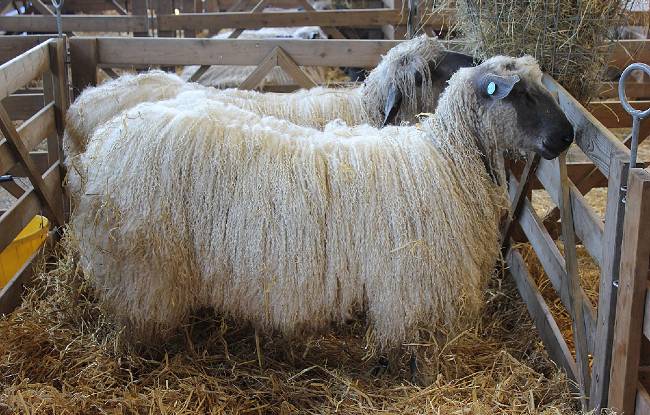
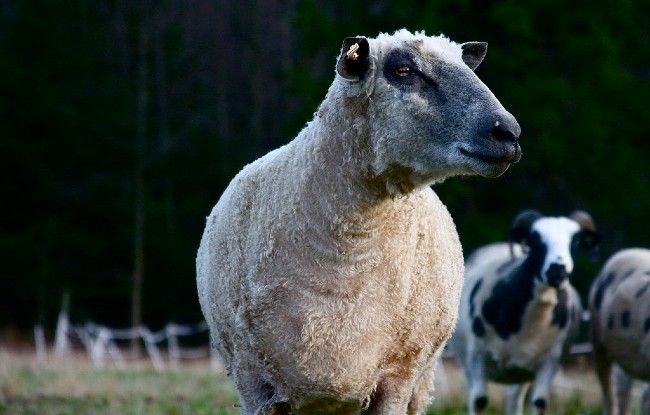

All 106 different breeds of sheep in the UK have differing, unique characteristics. These genetic traits are exploited by breeders ‘to realise breeding goals or strengthen existing stock.’7Agriculture and Horticulture Development Board. 2018. British Breeding sheep: Performance, tradition and innovation. AHDB Beef & Lamb. Available: https://assets.publishing.service.gov.uk/government/uploads/system/uploads/attachment_data/file/689578/Sheep_Leaflets_for_WEB_-_ENGLISH.PDF [Accessed 3 June 2021].
Like dairy cows, ewes are purely seen as productivity machines. When a young ewe reaches seven or eight months old, she is considered old enough to breed. Farmers often only keep the most fertile sheep so if she doesn’t become pregnant in her first breeding cycle, she will be killed for meat.8ADHB. 2021. Selecting ewe lambs for breeding. Available: https://ahdb.org.uk/knowledge-library/selecting-ewe-lambs-for-breeding [Accessed 15 July 2021]. In this industry, profit comes before compassion.
Older ewes from the hills are used to breed with an upland ram (male sheep) to create mules – a cross between the two breeds. Female upland mules are then sold to the lowlands where they are cross-bred with a lowland ram.5National Sheep Association. The UK Sheep Industry. NSA. Available: https://www.nationalsheep.org.uk/uk-sheep-industry/sheep-in-the-uk/the-uk-sheep-industry/ [Accessed 3 June 2021]. Lambs born in the lowlands are almost always killed for their meat.
Tupping
In a process called ‘tupping’, rams are introduced to a flock of ewes in a ratio of one ram to about 40 ewes.9Countryside Online. 2020. British lambing season. Available: https://www.countrysideonline.co.uk/food-and-farming/feeding-the-nation/livestock/british-lambing-season [Accessed 22 July 2021]. Farmers use multiple rams to increase the chances of the ewes becoming pregnant. This method is somewhat haphazard and so to improve the odds and have more control over genetics, many farmers turn to artificial insemination.
Artificial insemination
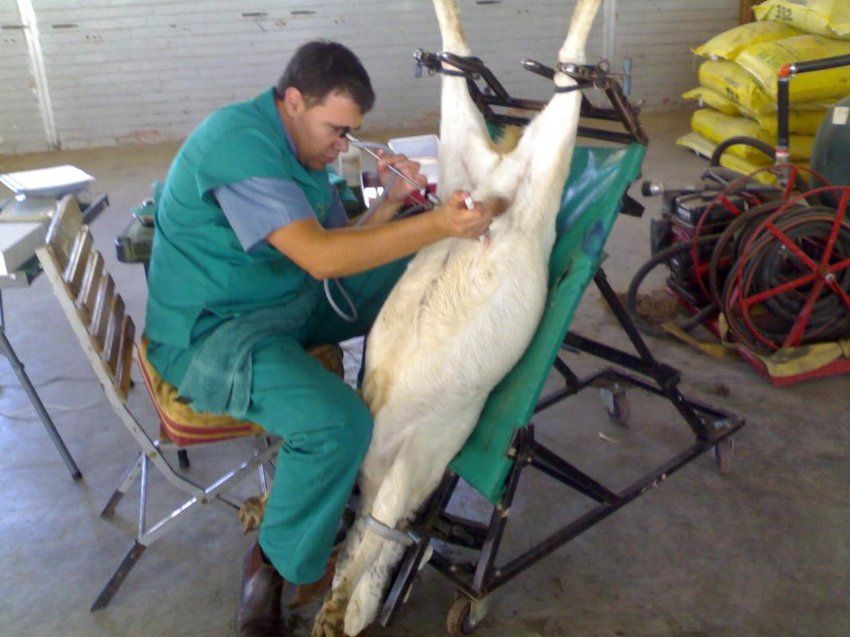
Laparoscopic insemination. Photo credit: R V Fhulufhelo
A widely-practised and intrusive form of artificial insemination is vaginal and cervical. For cervical insemination the ewe has to be cruelly restrained and have her hindquarters held at an accessible height – all dignity taken from her – so she can be violated. An inseminating tube, attached to a syringe or semiautomatic device, is violently inserted into her cervical canal as deep as possible. The cervical canals of sheep are often long and distorted if they’ve already given birth so this tortuous method of insemination can result in injuries and distress. If the cervix cannot be reached, a pipette full of semen is inserted deep into the ewe’s vagina.10Larsen, J. W. A. 2021. Artificial Insemination in Sheep. MSD Veterinary Manual. Available: https://www.merckvetmanual.com/management-and-nutrition/management-of-reproduction-sheep/artificial-insemination-in-sheep [Accessed 22 July 2021].
Another type of artificial insemination is laparoscopic insemination. This is when a ram’s fresh or frozen semen is injected directly into the ewe’s uterus, bypassing her vagina and cervix. Up to 250 ewes can be made pregnant in a day using this method and it is viewed by breeders as the most effective.7Agriculture and Horticulture Development Board. 2018. British Breeding sheep: Performance, tradition and innovation. AHDB Beef & Lamb. Available: https://assets.publishing.service.gov.uk/government/uploads/system/uploads/attachment_data/file/689578/Sheep_Leaflets_for_WEB_-_ENGLISH.PDF [Accessed 3 June 2021]. Often, once an embryo has started to develop, in another intrusive procedure, it will be flushed out and transferred to a donor sheep. However, because this method is so effective, it results in more lambs being born than is natural and the mother cannot feed them all so starvation is common. There is nothing natural or beautiful about this process and the unnatural results only lead to suffering.
Two to six million lambs die every year in the UK as a result of disease, exposure to bitter environments, or starvation – that’s a staggering mortality rate of between 10 and 20 per cent.11Viva!. 2020. Sheep & Lambs. Available: https://viva.org.uk/animals/sheep-lambs/ [Accessed 3 June 2021]. This is partly because lowland sheep have been manipulated by humans to give birth to twins, triplets and even quadruplets9Countryside Online. 2020. British lambing season. Available: https://www.countrysideonline.co.uk/food-and-farming/feeding-the-nation/livestock/british-lambing-season [Accessed 22 July 2021]. rather than the single one they would have had naturally. The situation is made worse by many sheep having been forced to give birth in winter so that farmers can cash in on the spring market. It might be more profitable but it causes more suffering and increases the mortality rate amongst lambs.
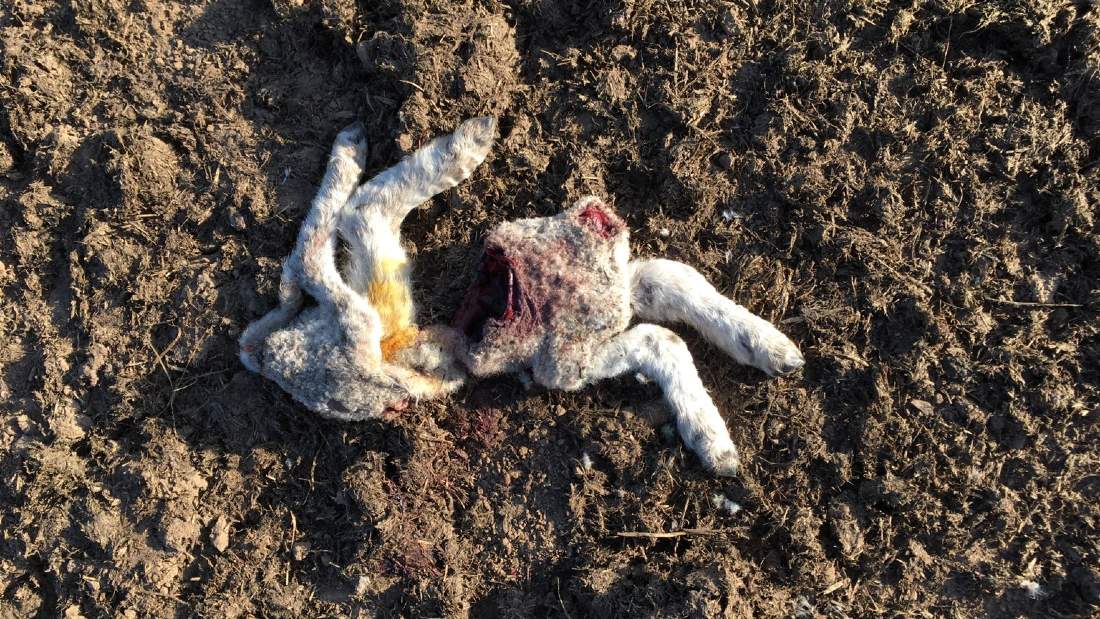
To find out more about how sheep are farmed, including tail docking and castration, click here:
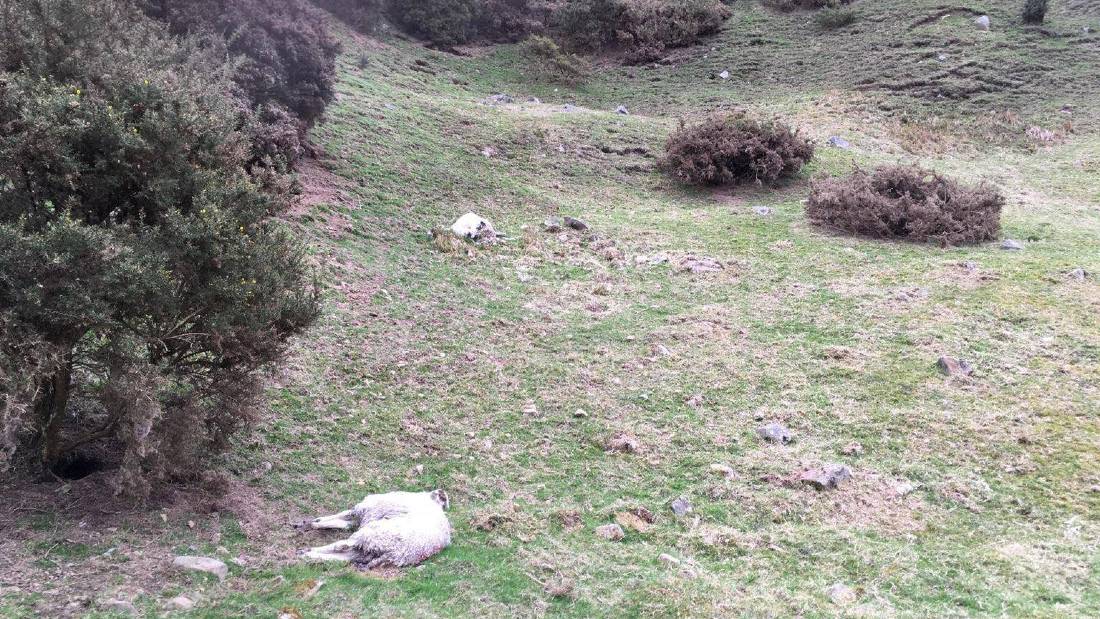
According to Make it British, “Britain is one of the largest wool producers in the world, yielding nearly 22,000 tonnes per year.”12Hills, K. 2018. 10 facts you may not know about British wool. Make it British. Available: https://makeitbritish.co.uk/fabric-and-yarn/ten-facts-british-wool/ [Accessed 3 June 2021]. In 2020, the British Isles was home to 32.7 million sheep13Defra. 2021. Structure of the agricultural industry in England and the UK at June. Available: https://www.gov.uk/government/statistical-data-sets/structure-of-the-agricultural-industry-in-england-and-the-uk-at-june [Accessed 3 June 2021]. and there are approximately 45,000 sheep farmers in the UK12Hills, K. 2018. 10 facts you may not know about British wool. Make it British. Available: https://makeitbritish.co.uk/fabric-and-yarn/ten-facts-british-wool/ [Accessed 3 June 2021]., In 2019, the UK slaughtered nearly 15 million sheep.14Agriculture and Horticulture Development Board. 2021. UK sheep facts and figures. AHDB. Available: https://ahdb.org.uk/uk-sheep-facts-and-figures [Accessed 3 June 2021].
However, the British wool industry is in crisis.
Thirty per cent of the UK’s wool is exported to and bought by China, from where it is sold on to textile manufacturers around the world.15Jones, L. & Heley, J. 2018. Unravelling British wool: how the local and global are intertwined in the making of everyday products. The Conversation. Available: https://theconversation.com/unravelling-british-wool-how-the-local-and-global-are-intertwined-in-the-making-of-everyday-products-99114 [Accessed 3 June 2021]. In a time when conscious consumers are asking for more transparency in the supply chain, the journey of wool products is very hard to trace.
The popularity of wool has been in decline since the 1950s16Mahy, E. 2020. Coronavirus: Sheep wool ‘barely worth selling any more’. BBC News. Available: https://www.bbc.com/news/business-53421546 [Accessed 3 June 2021]. but the coronavirus pandemic has hammered another nail in its coffin. In February 2020 the global wool market closed meaning farmers couldn’t sell their wool and it was left to rot or be burnt.15Jones, L. & Heley, J. 2018. Unravelling British wool: how the local and global are intertwined in the making of everyday products. The Conversation. Available: https://theconversation.com/unravelling-british-wool-how-the-local-and-global-are-intertwined-in-the-making-of-everyday-products-99114 [Accessed 3 June 2021]. In just 10 months, prices dropped from 60p a kilogram to 32p.17Twigg, M. 2021. The British wool industry is in crisis – here’s how Prince Charles wants you to help. The Telegraph. Available: https://www.telegraph.co.uk/fashion/style/british-wool-industry-crisis-prince-charles-wants-help/ [Accessed 3 June 2021].
“The reasons for the decline in the price for wool – while exacerbated by Covid-19 – are many. Industry insiders point to the growth in synthetic fibres, fewer players in the industry supply chain, Brexit uncertainty and the US-China trade war.”16Mahy, E. 2020. Coronavirus: Sheep wool ‘barely worth selling any more’. BBC News. Available: https://www.bbc.com/news/business-53421546 [Accessed 3 June 2021].
See Subsidies and Brexit section below.
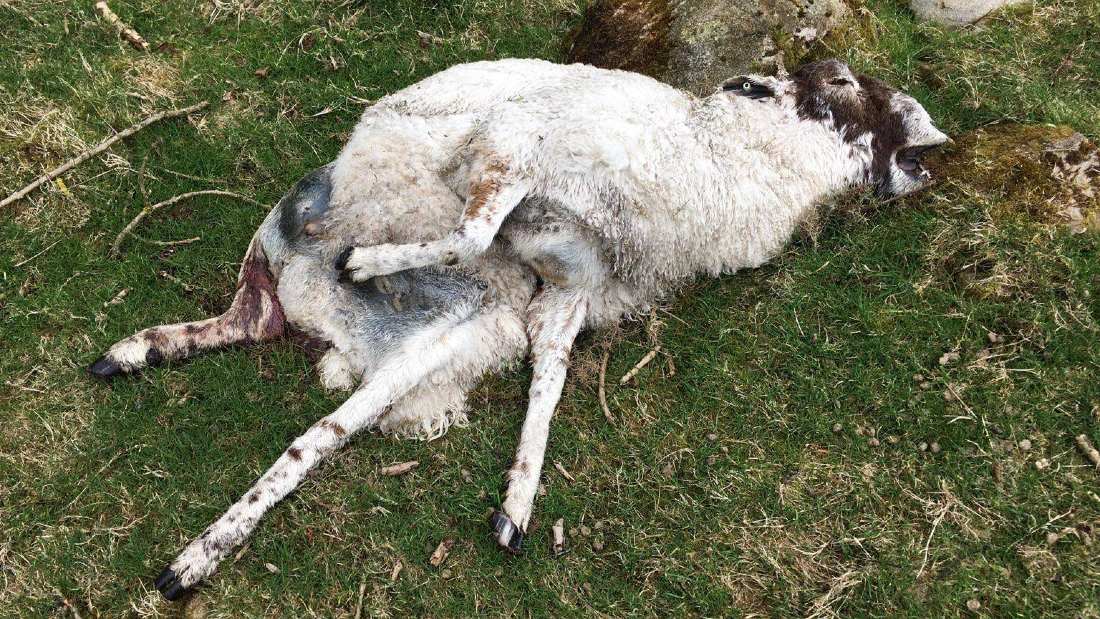
There are no laws protecting the welfare of sheep, only recommendations and guidance.
In order to farm sheep for wool, a farmer must register with British Wool, formerly British Wool Marketing Board (BWMB),18Gov.uk. Licence: Wool Marketing Board registration. Available: https://www.gov.uk/wool-marketing-board-registration [Accessed 3 June 2021]. which is an industry-led marketing organisation set up to look after the interests of the farmers and their profits rather than the sheep.
The Code of Recommendations for the Welfare of Livestock sets out some guidance, recommending that sheep be shorn at least once a year, that shearers should be experienced and adequately trained or supervised by someone who is, and discourages winter shearing unless the sheep can be housed indoors until spring, and only when the fleece has regrown to 15–20 mm in length.19Defra. 2003. Code of Recommendations for the Welfare of Livestock: Sheep. Defra. Available: https://assets.publishing.service.gov.uk/government/uploads/system/uploads/attachment_data/file/69365/pb5162-sheep-041028.pdf [Accessed 3 June 2021].
The Welfare of Farmed Animals (England) Regulations 2007 states that “Animals not kept in buildings must, where necessary and possible, be given protection from adverse weather conditions, predators and risks to their health and must, at all times, have access to a well-drained lying area.”20Legislation.gov.uk. 2007. The Welfare of Farmed Animals (England) Regulations 2007. Available: https://www.legislation.gov.uk/uksi/2007/2078/schedule/1/paragraph/17?view=plain [Accessed 3 June 2021]. Obviously this is open to interpretation and many sheep and lambs are left outside in very harsh weather.
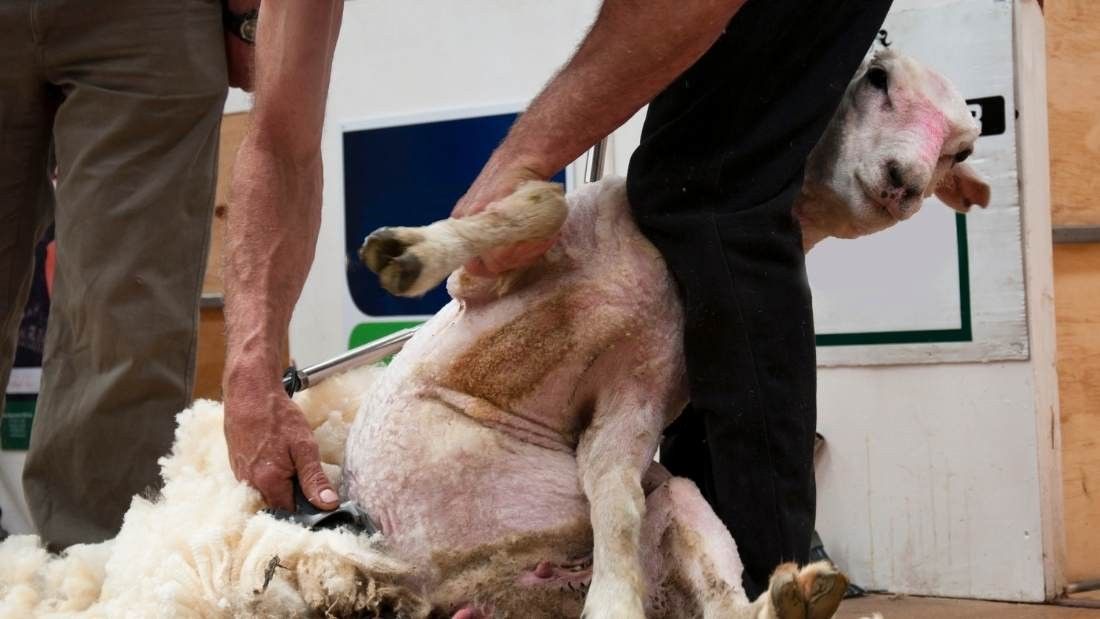
UK wool is either stripped from the bodies of slaughtered lambs or taken from breeding sheep.
Unlike wild sheep, domesticated sheep no longer moult naturally, and their fleeces are mechanically shorn at least once a year. This usually happens at the end of winter or in the summer but sometimes – in an attempt to increase profits – sheep will be shorn again in the winter. If so, they should be kept in a shed but even these can reach freezing temperatures.
Shearers are paid by the number of sheep they shear. They earn about £2 per sheep but can shear up to 200 a day.1Harding, M. 2014. Sheep Shearing in the UK. Indie Farmer. Available: https://www.indiefarmer.com/2014/07/22/sheep-shearing-uk/ [Accessed 3 June 2021]. There is every incentive for them to rush through the process to earn as much money as possible, which increases the chance of cuts and injury to the sheep.
Sheep are easily frightened and don’t like being handled but shearers forcibly restrain them to remove their wool. The sheep are usually ‘tipped’ on their back and pinned between the shearer’s legs. It is traumatic for them, and they have no legal protection so mistreatment is common. Shearers should be trained but there is no legal requirement,2Defra. 2013. Caring For Sheep And Goats. Defra. Available: https://www.gov.uk/government/publications/code-of-recommendations-for-the-welfare-of-livestock-sheep/sheep-and-goats-welfare-recommendations [Accessed 3 June 2021]. and so sheep may well be shorn by inexperienced people with all that might entail.
To prevent sheep from vomiting due to stress, food and water are often withheld for eight hours beforehand.
Some farmers are shearing twice a year now, once in summer and again in winter when demand for wool products increases because of the cold. Winter shearing means that sheep have little or no protection against freezing temperatures and exposure, which increases rates of disease, illness, suffering and mortality – all because farmers are driven to extreme measures to make a living.
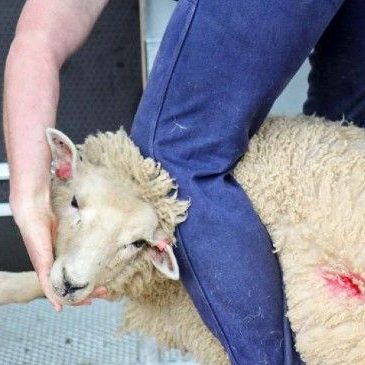
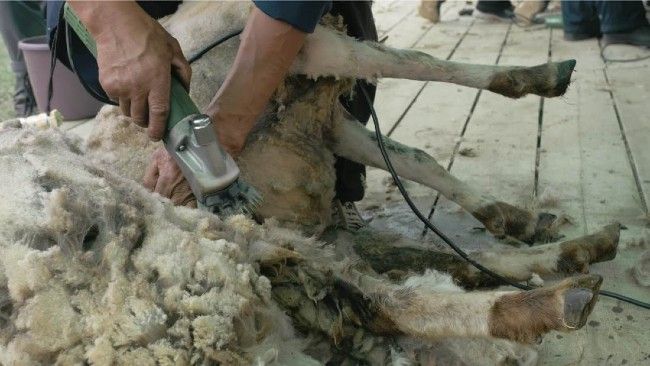
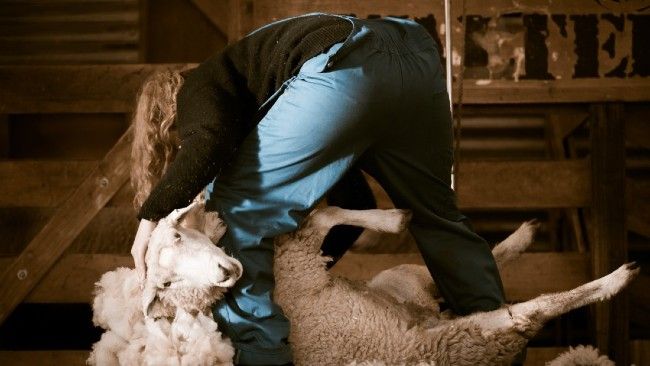
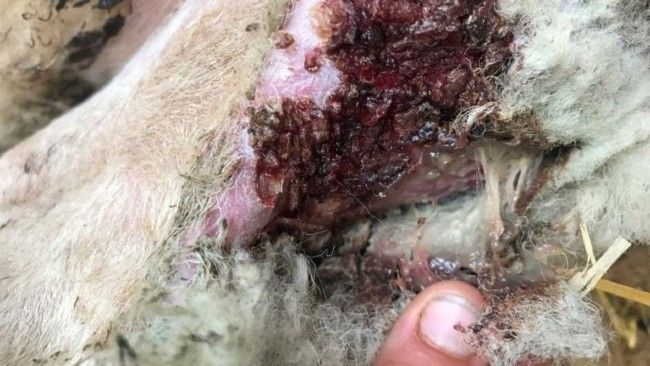
Once shorn from a breeding sheep or removed from a dead lamb, the wool is sorted into different qualities before being cleaned. Low-quality wool is generally used for carpets while high-quality soft wool (lambswool) is used for clothing.
After shearing, wool will contain traces of dirt, faeces, blood and skin, as well as naturally occurring oils (lanolin) and sweat.3Woolmark. How to Process Wool. Available: https://www.woolmark.com/industry/use-wool/wool-processing/ [Accessed 3 June 2021]. All wool is cleaned to a degree but ‘treated’ wool is cleaned more thoroughly than ‘untreated’ wool.
Defra classifies animal wool and hair as low-risk category 3 animal by-products (ABPs).4Defra. 2014. Animal by-products: handling and treating wool and hair. Gov.uk. Available: https://www.gov.uk/guidance/animal-by-products-handling-and-treating-wool-and-hair [Accessed 3 June 2021]. Treated wool can be sold without any restrictions whereas untreated wool has to be free from faeces and come from an animal without any disease. There are five treatment methods approved by the World Organisation for Animal Health:4Defra. 2014. Animal by-products: handling and treating wool and hair. Gov.uk. Available: https://www.gov.uk/guidance/animal-by-products-handling-and-treating-wool-and-hair [Accessed 3 June 2021].
- factory-washing it in a series of baths – first water, then soap with sodium hydroxide (soda) or potassium hydroxide (potash)
- using slaked lime or sodium sulphide to chemically remove the hair
- fumigating it in a hermetically sealed chamber for 24 hours, using formaldehyde
- storing it at 37°C for 8 days, 18°C for 28 days or 4°C for 120 days – this can include journey times
- industrially scouring it by immersing it in a water-soluble detergent held at 60–70°C
The next process is carding, where the fibres are pulled through fine metal teeth to straighten and soften them. The wool is then ready to be spun into yarn and be dyed the desired colour. These processes may vary depending on the required finished product.
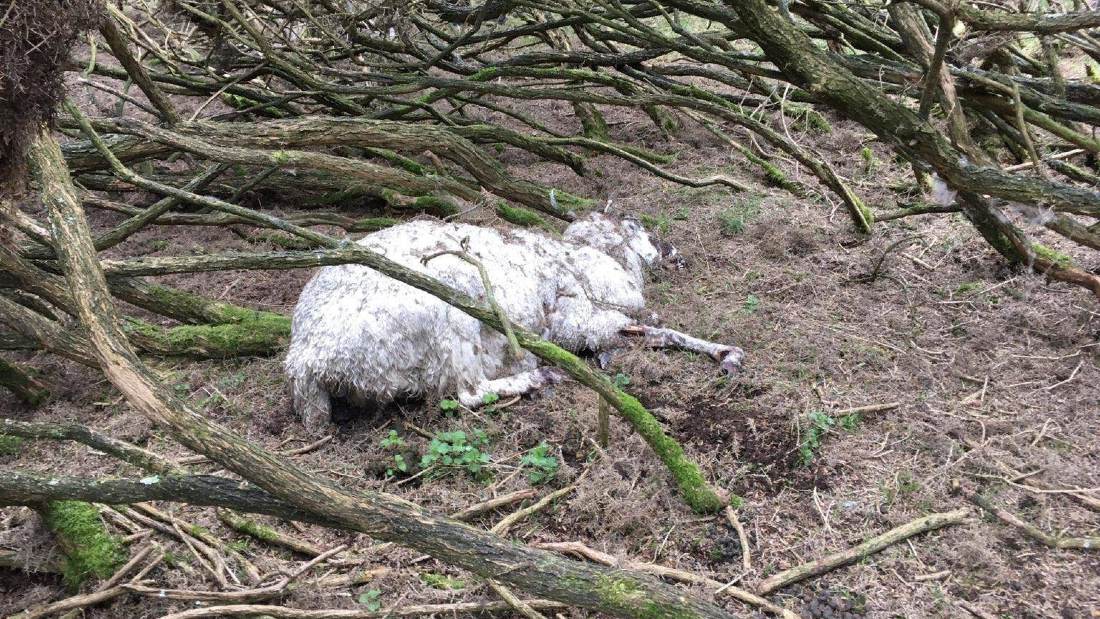
Sheep are farmed to serve two main purposes. The first is to produce lambs to be slaughtered for meat. The second is to produce breeding ewes (who replace sheep who have become too old to breed). A very small minority of sheep are also kept to produce dairy. Wool is taken from both slaughtered lambs and the sheep kept for breeding – mainly upland ewes. However, after a couple of years, when they become too old to breed and the quality of their wool deteriorates, they too are killed for cheap meat. Therefore, the meat and wool industries are one and the same: there is no separation of the two cruel practices.
Although technically a by-product of the meat industry, wool plays a significant role in financially supporting an exploitative business. The wool and meat industries are inextricably linked so by supporting one you are supporting the other. Wool is only available because domesticated sheep, who need to be sheared, continue to be bred for meat. In the UK, there is no separation of the two practices. In other parts of the world, including Australia (see Wool Around the World below), some sheep are bred exclusively for their wool.
Killing animals for meat sounds inherently crueller than shearing their wool, but the latter is still unnecessarily hostile and traumatic for the animal. They are restrained, often injured in the process and have their bodily anatomy exploited. In any case, even sheep kept for their wool are killed for cheap meat after a couple of years when their wool production slows as they age. So, even if wool is a by-product, it’s certainly not harmless. What’s more, it furthers the misconception that animals are here to be used and exploited by humans.
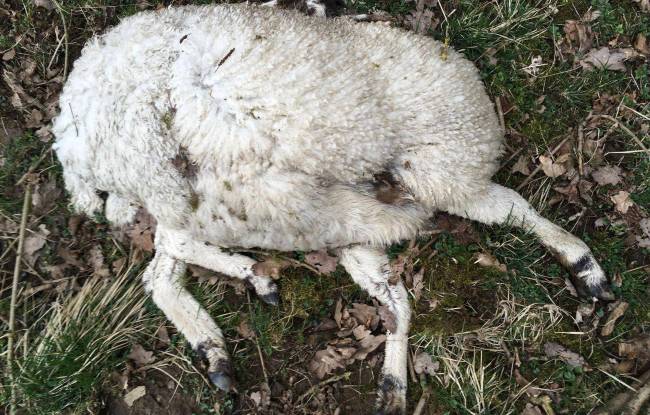
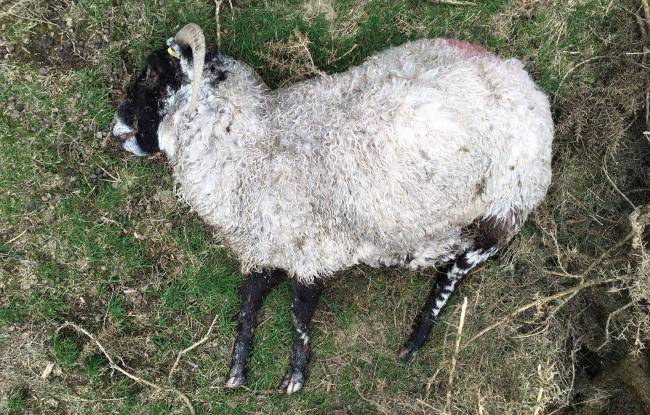

According to the Journal of Environmental Management, the main environmental impacts of UK agriculture are due to pesticides, nitrogen compounds from fertilisers, urine and faeces from farmed animals, and soil erosion1Skinner, J.A., Lewis, K.A., Bardon, K.S., Tucker, P., Catt, J. A. & Chambers, B.J. 1996. ‘An Overview of the Environmental Impact of Agriculture in the U.K.’. Journal of Environmental Management, 50 (2) pp. 111-128. Available: https://www.sciencedirect.com/science/article/pii/S0301479796901036 [Accessed 3 June 2021]. – and the sheep farming industry is no exception.
Pesticides
Despite wool being marketed as an all-natural, eco-friendly product, the processes involved in its manufacture couldn’t be more unnatural.
Farmers use sheep dip – a pesticide bath – to rid sheep of “sheep scab and other ecto-parasites including ticks, lice and blowfly.”2Shadwell, A. 2019. Sheep dip – has the wool been pulled over our eyes? Groundsure. Available: https://www.groundsure.com/resources/sheep-dip-has-the-wool-been-pulled-over-our-eyes/ [Accessed 3 June 2021]. The pesticides find their way into the soil and groundwater polluting the surrounding environment. Although the carcinogenic arsenic hasn’t been used since the 1950s, it can still be found in the soil today.3Robinson, A. 2016. Are historical sheep dipping baths in the Ribble Valley a source of arsenic pollution able to cause significant harm to human health? University of Central Lancashire. Available: http://clok.uclan.ac.uk/14942/ [Accessed 2 June 2021].
Nowadays, organophosphate is the commonly-used pesticide to treat sheep and it still comes with many risks.4Health & Safety Executive. Sheep Dipping: Advice for farmers and others involved in dipping sheep. HSE. Available: https://www.hse.gov.uk/pubns/ais41.pdf [Accessed 3 June 2021]. Not only does this pesticide leach into and pollute the ground, but it poses many health risks to humans. These include: stinging eyes, muscle tremors, severe vomiting and even coma or death.5Fletcher, J. 2017. What are the symptoms of organophosphate poisoning? Medical News Today. Available: https://www.medicalnewstoday.com/articles/320350 [Accessed 3 June 2021]. In fact, “nearly 25 million cases of unintentional pesticide poisoning occur in the agricultural industry across the world each year.”5Fletcher, J. 2017. What are the symptoms of organophosphate poisoning? Medical News Today. Available: https://www.medicalnewstoday.com/articles/320350 [Accessed 3 June 2021].
So wool isn’t just bad for the sheep but it’s bad for the surrounding environment and anyone who works with them.
Damage to ecosystem
At first glance, one might think that Britain’s rolling hills are a sign that all is well in the kingdom’s countryside. Unfortunately, the opposite is true. Britain is leading the world in destroying its natural habitats6Davis, J. 2020. UK has ‘led the world’ in destroying the natural environment. NHM. Available: https://www.nhm.ac.uk/discover/news/2020/september/uk-has-led-the-world-in-destroying-the-natural-environment.html [Accessed 3 June 2021]. and according to the State of Nature 2019 report, 41 per cent of species have decreased in abundance since 1970.7National Biodiversity Network. 2019. State of Nature. NBN. Available: https://nbn.org.uk/wp-content/uploads/2019/09/State-of-Nature-2019-UK-full-report.pdf [Accessed 3 June 2021].
Environmental writer George Monbiot argues that sheep are “the greatest threat to our countryside” and “have reduced most of our uplands to bowling greens with contours. Only the merest remnants of life persist.”8Monbiot, G. 2013. Meet the greatest threat to our countryside: sheep. The Spectator. Available: https://www.spectator.co.uk/article/meet-the-greatest-threat-to-our-countryside-sheep [Accessed 3 June 2021]. The constant grazing of sheep prevents shrubs and trees from growing on the hills, and compacts and erodes the soil. These activities reduce habitats for wildlife and pose hazards to humans in the form of landslips. The lack of shrubs and trees also leads to more run-off and increases the risk of flash flooding downhill as there is nothing left to absorb and slow the rain water. This has an adverse effect on the fertility of the soil in lower lands.8Monbiot, G. 2013. Meet the greatest threat to our countryside: sheep. The Spectator. Available: https://www.spectator.co.uk/article/meet-the-greatest-threat-to-our-countryside-sheep [Accessed 3 June 2021]. Rather than the cycle of sheep farming being in harmony with the natural world, as farmers would claim, it is creating an imbalance in the ecosystem.
Greenhouse gas emissions
Sheep, like cows and other ruminants, release huge amounts of methane into the atmosphere.9Allen, E. 2019. The environmental impact of wool. Ecologist. Available: https://theecologist.org/2019/mar/12/environmental-impact-wool [Accessed 3 June 2021]. The Government’s Committee on Climate Change (CCC) identified that beef and lamb produce the most greenhouse gases,10Harrabin, R. 2018. Climate change: Report says ‘cut lamb and beef’. BBC News. Available: https://www.bbc.com/news/science-environment-46214864 [Accessed 3 June 2021]. compared to other animal products in the UK, and of course, the lamb industry is inextricably woven into the wool industry. This led to Welsh farmers being urged to cut their GHG emissions and “for a fifth of UK farmland to be given over to efforts to store carbon.”11Messenger, S. 2020. Climate change: Welsh farms told to cut more carbon emissions. BBC News. Available: https://www.bbc.com/news/uk-wales-55217228 [Accessed 3 June 2021].
Therefore, sheep farming’s impact on climate change is twofold. Not only do the sheep release huge amounts of methane but, because they are constant grazers, they prevent any trees and shrubs from growing which could sequester the carbon in the atmosphere.
In fact, sheep are so damaging to the environment that scientists are trying to breed sheep who produce less greenhouse gases.12PA Media. 2019. Scientists hope to breed sheep that emit less greenhouse gases. The Guardian. Available: https://www.theguardian.com/environment/2019/oct/02/scientists-hope-breed-sheep-emit-less-greenhouse-gases [Accessed 3 June 2021]. But there is another more obvious solution to the problems associated with sheep farming: stop doing it and rewild the land.
Rewilding the land on which sheep are left to graze and deplete, would not only solve the problems described by Monbiot but would reduce the GHG emissions of the UK. According to the CCC, tree planting and the restoration of peatlands would restore natural habitats, improve soil health and sequester carbon.13Committee on Climate Change. 2020. Land use: Policies for a Net Zero UK. CCC. Available: https://www.theccc.org.uk/publication/land-use-policies-for-a-net-zero-uk/ [Accessed 3 June 2021]. Furthermore, no more sheep would have to needlessly suffer for their flesh and wool.
Sheep farming and the production of wool – particularly on upland farms – would not be possible without subsidies and other economic support schemes.14Clark, C. & Scanlon, B. 2019. Less is more: Improving profitability and the natural environment in hill and other marginal farming systems. RSPB. Available: https://www.wildlifetrusts.org/sites/default/files/2019-11/Hill%20farm%20profitability%20report%20-%20FINAL%20agreed%2015%20Nov%2019.pdf [Accessed 3 June 2021]. In fact, “on average, farmers across the UK make far more money from subsidies than they do from agriculture” and generally sheep farming is one of the least profitable forms of animal agriculture.15Fullfact.org. 2016. Do farmers make more from subsidies than agriculture? Full Fact. Available: https://fullfact.org/economy/farming-subsidies-uk/ [Accessed 3 June 2021].
Pre-Brexit, British farmers received around £3.4bn a year in taxpayer subsidies under the EU’s Common Agricultural Policy (CAP)16Sky News. 2020. Farmers to be paid to protect the environment and improve animal welfare. Sky News. Available: https://news.sky.com/story/farmers-to-be-paid-to-protect-the-environment-and-improve-animal-welfare-11909574 [Accessed 3 June 2021]. and the average sheep farm received approximately £35,000.14Clark, C. & Scanlon, B. 2019. Less is more: Improving profitability and the natural environment in hill and other marginal farming systems. RSPB. Available: https://www.wildlifetrusts.org/sites/default/files/2019-11/Hill%20farm%20profitability%20report%20-%20FINAL%20agreed%2015%20Nov%2019.pdf [Accessed 3 June 2021]. Without this subsidy, nearly half of all sheep farms would have made a loss.14Clark, C. & Scanlon, B. 2019. Less is more: Improving profitability and the natural environment in hill and other marginal farming systems. RSPB. Available: https://www.wildlifetrusts.org/sites/default/files/2019-11/Hill%20farm%20profitability%20report%20-%20FINAL%20agreed%2015%20Nov%2019.pdf [Accessed 3 June 2021]. But since the UK left the EU, CAP has been replaced by the Environmental Land Management payment scheme, the UK’s own subsidy scheme which is said to promote the protection of the environment, access to the countryside and animal welfare.16Sky News. 2020. Farmers to be paid to protect the environment and improve animal welfare. Sky News. Available: https://news.sky.com/story/farmers-to-be-paid-to-protect-the-environment-and-improve-animal-welfare-11909574 [Accessed 3 June 2021]. If – and it’s a big if – the ELMS does prioritise the environment, a paper by researchers at the University or Reading17Manzoor, A.M., Griffiths, G., Rose, D.C. & Lukac, M. 2021. The Return of Wooded Landscapes in Wales: An Exploration of Possible Post-Brexit Futures. Land, 10(1):59. Available: https://doi.org/10.3390/land10010059 [Accessed 3 June 2021]. suggests Wales could be transformed from sheep farms to forests. One of the authors, Dr Manzoor, said:
“Our modelling really shows the pronounced impact that the EU has already had in supporting certain economic conditions for land use. It should be remembered that the iconic pastoral, sheep-grazed hillsides of Wales only look like that because taxpayers have been paying for sheep to graze. Overall, Welsh sheep farmers received between 45-80% of their turnover from EU subsidies prior to the UK leaving the EU. As a result, changes to the conditions for farmers to receive subsidies and grants, such as Wales’ proposed Sustainable Farming Scheme, are going to provide incentives to farmers to be more mindful of the environment.”18University of Reading. 2021. Brexit Could Transform Wales From Sheep Farms to Forest. University of Reading. Available: https://www.reading.ac.uk/news-and-events/releases/PR855385.aspx [Accessed 3 June 2021].

Global wool production is valued at around £5.4 billion per year.1Common Objective. 2018. Global Wool Production and Sustainable Standards. Common Objective. Available: https://www.commonobjective.co/article/global-wool-production-and-sustainable-standards [Accessed 3 June 2021]. The most wool is produced by China, Australia and New Zealand, with Australia being the dominant exporter and China importing the most. Other notable producers include the UK, Iran, Russia and South Africa.1Common Objective. 2018. Global Wool Production and Sustainable Standards. Common Objective. Available: https://www.commonobjective.co/article/global-wool-production-and-sustainable-standards [Accessed 3 June 2021].
Australia
Australia produces 25 per cent of the wool sold on the global market.2Department of Agriculture, Water and the Environment. 2020. Wool. Available: https://www.agriculture.gov.au/ag-farm-food/meat-wool-dairy/wool [Accessed 3 June 2021]. The Australian wool industry prefers to use Merino sheep who have excess skin folds that produce a higher volume of very soft wool. Unfortunately, these sheep are prone to developing a painful, often fatal condition called flystrike. Wrinkled skin at the back and top of their hind legs and under their tail is particularly susceptible to retaining moisture, urine and faeces. Blowflies are attracted to this moist area, where they lay eggs.
Mulesing
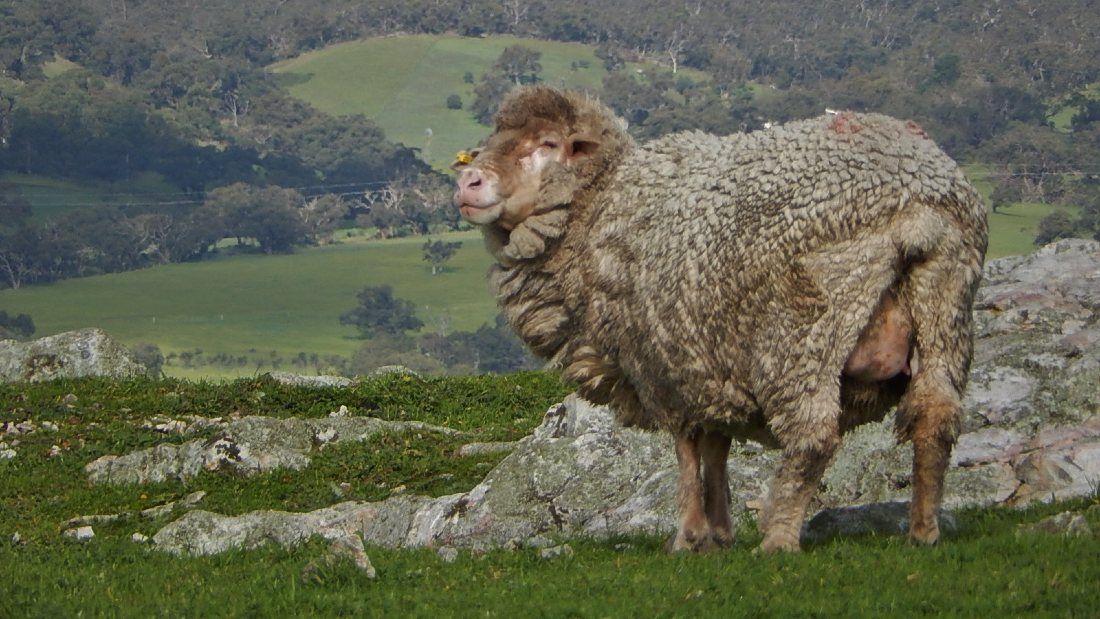
A mulesed Merino sheep in Australia. Photo by Michael Coghlan.
To make sheep less susceptible to flystrike, the mutilation practice of mulesing was developed using shears to cut away skin around their buttocks to create an area of bare, stretched scar tissue which is less likely to attract blowflies. In some cases, liquid nitrogen is applied directly to this area, causing immense pain as, unlike when humans have cryotherapy, no anaesthetic is used. The frozen skin is left to die and drop off, leaving an area of stretched, scar tissue.
Mulesing can have a profound effect on lambs – they socialise less, lose weight in the first two weeks post-mulesing, exhibit pain indicators, including prolonged hunched standing and less time lying and feeding. The effect on gait and growth may be apparent for up to three weeks following the procedure. Following mulesing, lambs may avoid humans and, in particular, the person who carried out the procedure, for a period of up to five weeks. This shows fear and the desire not to experience it again.3RSPCA Australia. 2021. What is the RSPCA’s view on mulesing and flystrike prevention in sheep? RSPCA Australia. Available at https://kb.rspca.org.au/knowledge-base/what-is-the-rspcas-view-on-mulesing-and-flystrike-prevention-in-sheep/ [Accessed July 2020].
About 30 million lambs are mulesed annually in Australia, accounting for about 70 per cent of all Merino sheep. European wool processors and fashion houses are increasingly refusing to buy wool from mulesed sheep on ethical grounds and from October 2018, New Zealand placed a blanket ban on the practice.4Lee, T. 2019. Wool growers turn to freezing as retailers go cold on controversial mulesing. ABC News. Available: https://www.abc.net.au/news/2019-09-01/freezing-alternative-to-mulesing-winning-over-wool-growers/11465632 [Accessed 3 June 2021].
Other painful mutilations are carried out at the same time: tail docking, castration (removing testicles in ram lambs) and ear notching or ear tagging. Sheep have their tails docked by using rubber rings, a heated blade, or by clamping it to crush the bone and kill the nerves. Castration with a rubber ring is usually performed at about 24 hours after birth.
Shedded sheep
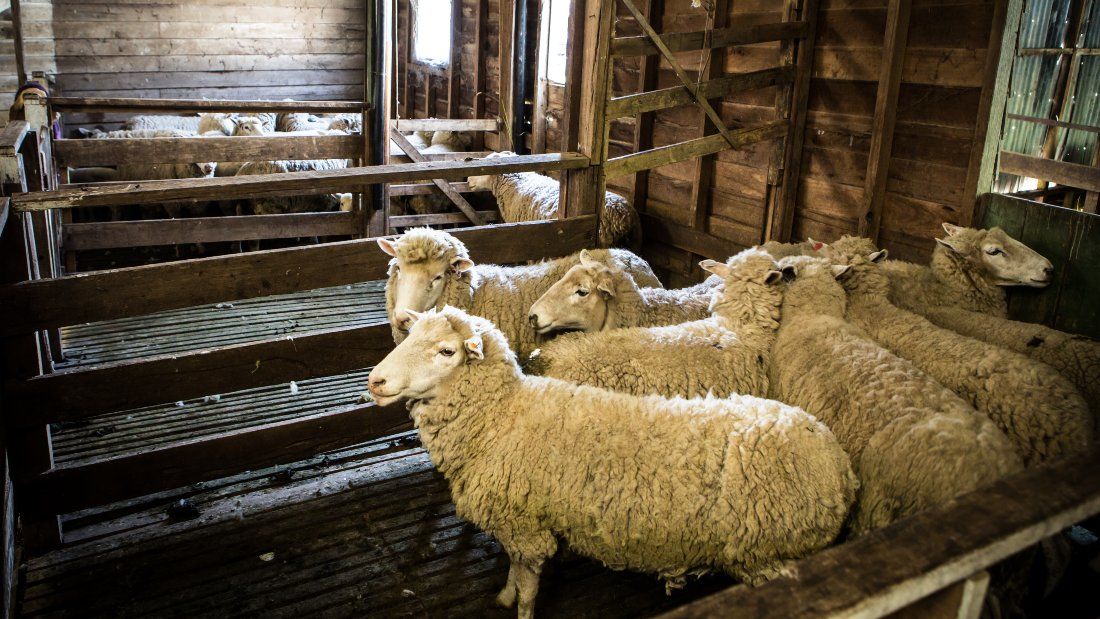
Shedded Merino sheep in Australia
About 12 per cent of Australia’s wool comes from ‘shedded sheep’ – Merino sheep that are kept indoors, “in group pens or in individual stalls within a large shed for up to five years.” By keeping sheep indoors, farmers believe they have more control over “the selection, feeding, fibre length, fibre diameter, tensile strength and style of their wool.”5RSPCA Australia. 2019. What are the animal welfare issues with individual housing of sheep? RSPCA Australia. Available: https://kb.rspca.org.au/knowledge-base/what-are-the-animal-welfare-issues-with-individual-housing-of-sheep/ [Accessed 3 June 2021].
But confining sheep comes with many issues. According to the RSPCA5RSPCA Australia. 2019. What are the animal welfare issues with individual housing of sheep? RSPCA Australia. Available: https://kb.rspca.org.au/knowledge-base/what-are-the-animal-welfare-issues-with-individual-housing-of-sheep/ [Accessed 3 June 2021]. these include:
- extremely poor nutrition, which is a major welfare concern – feeding may be restricted to a bare minimum of energy required to maintain life
- vitamin and mineral deficiencies
- restricted feeding affects a sheep’s digestive function
- daily rations are eaten quickly, leaving the sheep with nothing to do when they would naturally graze for half the day
- five to 15 per cent of sheep do not adjust to being indoors and some stop eating entirely
- sheep cannot form social groups or establish a personal zone and behavioural problems often develop as a result of the boredom
- normal sleeping, drinking and digestion are affected by chronic stress and sheep who are stressed are likely to suffer from disease and parasites
- pens are too small for natural movement such as stretching, laying down, turning, walking and running
- foot problems are common from constantly standing on hard surfaces
- bacterial infections can result from changes in the sheep’s gut
- stones in the urine may result from not drinking enough water
- sheep suffer without temperature control in sheds, cannot flock together to keep warm in the cold and, in the heat, rugging sheep can lead to overheating.
Studies show that:
- sheep suffer acute stress due to change of environment and diet, continuing poor nutrition, noise, bright lighting, changes to routine and/or poor stockmanship
- sheep are stressed by the lack of flock structure and space to move
- stress continues because sheep cannot escape from the causes of their stress
- long-term confinement and chronic stress lead to changes in a sheep’s normal behaviour
Behavioural problems seen in shedded sheep include wool biting, chewing slats, bars, buckets or pen fixtures, mouthing air and repetitive licking, increased vocalisation, panting even when they are not heat stressed, obsessive movements such as rearing, butting, leaping and weaving.
Cashmere
 Cashmere, mohair and Pashmina are all made from goat hair. Confusingly, mohair fabric comes from the hair of the Angora goat, whereas Angora fabric is made from the hair of Angora rabbits.
Cashmere, mohair and Pashmina are all made from goat hair. Confusingly, mohair fabric comes from the hair of the Angora goat, whereas Angora fabric is made from the hair of Angora rabbits.
Goats’ hair is removed either by combing or hand shearing. The cashmere goat has a protective outer coat of coarse fibre and a downy undercoat made up of the fine, soft fibre commonly called cashmere. Most of this down fibre is plucked or combed out by hand during the moulting season. Iranian cashmere, however, is obtained by shearing.
The annual yield per animal ranges from a few grams to about 0.5 kilograms. A single sweater requires the fleece of four to six goats. ‘Pulled cashmere’ is taken from the skins of slaughtered animals.6The Editors of Encyclopaedia Britannica. Cashmere. Encyclopaedia Britannica. Available: https://www.britannica.com/topic/cashmere [Accessed 3 June 2021]. Major producers of cashmere are China, Mongolia and Iran but is also produced on the Indian subcontinent, in Afghanistan and Turkey. The United States, the UK and Japan are leading consumers.
High demand for the valuable fibre has resulted in the decimation and desertification of grasslands in Asia.7Schmitz, Rob. 9 December 2016. ‘How Your Cashmere Sweater Is Decimating Mongolia’s Grasslands’. NPR. Available at https://choice.npr.org/index.html?origin=https://www.npr.org/sections/parallels/2016/12/09/504118819/how-your-cashmere-sweater-is-decimating-mongolias-grasslands [Accessed July 2020] This has increased local temperatures and air pollution, which has travelled as far as the Americas.8Osnos, E. 2006. Your cheap sweater’s real cost. Chicago Tribune. Available: https://blog.alpacadirect.com/wp-content/uploads/2010/05/chi-china-cashmere-htmlstory,0,7007933.htmlstory [Accessed 3 June 2021].
Llama/Alpaca wool
Marks & Spencer has confirmed it will eliminate alpaca wool from all future product developments. This follows their viewing of footage from an animal rights organisation which showed crying alpacas being roughly sheared and left bleeding from deep wounds. Peta undertook the undercover investigation into Mallkini, the world’s largest privately-owned alpaca farm in Peru. It showed workers holding struggling and crying alpacas by the ears as they were roughly shorn with electric clippers, causing some to vomit out of fear.9Vegan Food & Living. 2020. Marks & Spencer ditches alpaca wool following undercover investigation. Anthem Publishing. Available: https://www.veganfoodandliving.com/news/marks-spencer-ditches-alpaca-wool-following-undercover-investigation/ [Accessed 3 June 2021].
There are environmental concerns surrounding the use of alpaca wool according to the Higg Materials Sustainability Index, which ranked alpaca wool as the second most environmentally damaging material after silk, six times as environmentally harmful as polyester and more than four times as damaging as modal, viscose, rayon, lyocell, acrylic, and other vegan materials.10Mathews, B. 2020. PETA cites Higg again as brands ditch alpaca. Apparel Insider. Available: https://apparelinsider.com/peta-cites-higg-again-as-brands-ditch-alpaca/ [Accessed 3 June 2021].
Ang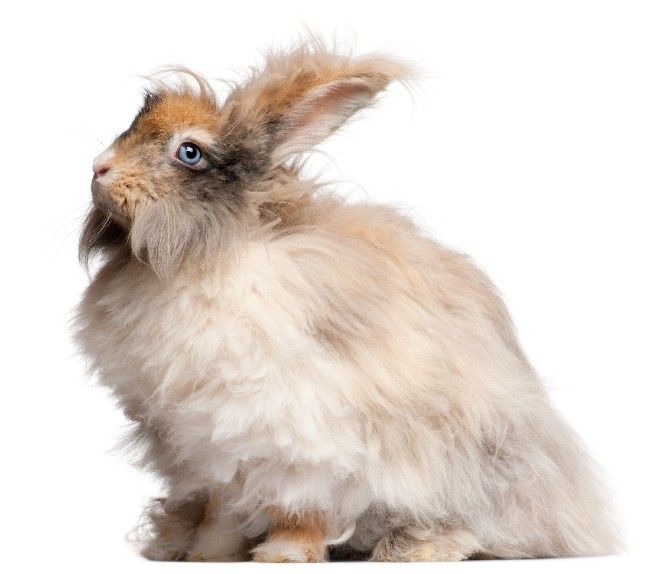 ora
ora
Angora commonly refers to fabric made from the hair of the Angora rabbit and is used to make jumpers, socks and scarves. A 2016 investigation showed Angora rabbits in France having their hair ripped from their bodies whilst fully conscious.11Newton, J. 2016. Writhing in pain as its fur is ripped from its skin, shocking footage reveals brutal treatment of rabbits bred in captivity for the angora trade. Mail Online. Available: https://www.dailymail.co.uk/news/article-3790490/Writhing-pain-fur-ripped-skin-shocking-footage-reveals-brutal-treatment-rabbits-bred-captivity-angora-trade.html [Accessed June 2021]. The hair is plucked rather than shaved as it removes the root and produces longer, more expensive fibres. It is considered too expensive to anaesthetise the rabbits and as a result they writhe around and shriek in pain and sometimes their skin is torn by the force of the plucking.
Angora rabbits are bred in captivity in pens similar to battery chickens before being pinned down with their front and hind legs spread apart to be plucked. China produces 90 per cent of the world’s angora wool11Newton, J. 2016. Writhing in pain as its fur is ripped from its skin, shocking footage reveals brutal treatment of rabbits bred in captivity for the angora trade. Mail Online. Available: https://www.dailymail.co.uk/news/article-3790490/Writhing-pain-fur-ripped-skin-shocking-footage-reveals-brutal-treatment-rabbits-bred-captivity-angora-trade.html [Accessed June 2021]. although there are also producers in Europe, including France, Chile and the USA.
Astrakhan
Also spelled astrachan, it is the tightly-curled fleece obtained from the foetuses or new-born lambs of the karakul (caracul) sheep. Although not strictly accurate, it can also refer to fleeces from the foetuses/newborn lambs from other species, or even knitted or woven looped fabric that imitates the appearance of Astrakhan. Astrakhan itself has a distinctive, tight, whorled, loopy surface with a slight sheen. The younger the lamb, the tighter and shinier the loops.12Oakes, L. 2012. Terminology: What is astrakhan? The Dreamstress. Available: https://thedreamstress.com/2012/01/terminology-what-is-astrakhan/ [Accessed June 2021].
True astrakhan comes in a range of colours from pale golden yellow to black, with black being considered the most desirable. It usually comes from a lamb foetus that is 15-30 days from being born and to obtain it, both ewe and the unborn lamb are killed.
Camel hair
Camel hair and Qiviut (hair from the muskox) are more rarely used to produce fabrics but the methods used to collect them are no kinder. Camel hair is promoted as a sustainable, cruelty-free option but most of it comes from China and Mongolia where there are no animal welfare laws or enforcement. Camels will still be killed when they are no longer of use.
Felt
Felt is a matted fabric made of wool or hair. The fibres are worked together under pressure, by heat or chemical action. This is a little confusing for vegans as the fibres used can be animal hair or wool but they can also be synthetic fibres or a blend of both.
Synthetic felt fibres are likely to be labelled as such whereas wool or animal-hair felt products are more likely to be labelled as ‘natural’ or even ‘eco-friendly or ‘sustainable’. If you’re unsure, check with the manufacturer – this also makes them aware that people are avoiding animal-hair and encourages them to switch to other materials.
Alternatives to wool were once criticised for not being anywhere near as biodegradable as the real thing.13Twigg, M. 2021. The British wool industry is in crisis – here’s how Prince Charles wants you to help. The Telegraph. Available: https://www.telegraph.co.uk/fashion/style/british-wool-industry-crisis-prince-charles-wants-help/ [Accessed 3 June 2021]. This critique may have been true of the particular fabric they tested if it contained microplastics, but even so, it ignores all of the other problems with animal agriculture. Even supposedly ‘sustainable’ brands like Patagonia have been exposed by animal rights groups for the terrible treatment of the sheep they use for wool – including lambs being skinned alive.14Peta. 2021. Patagonia’s ‘Sustainable Wool’ Supplier Exposed: Lambs Skinned Alive, Throats Slit, Tails Cut Off. Peta. Available: https://investigations.peta.org/ovis-lamb-slaughter-sheep-cruelty/ [Accessed 4 June 2021].
Thankfully, now there are many environmentally-friendly vegan alternatives to wool which are free from plastic, petrochemicals and animal cruelty.
These include Tencel (or Lyocell) made from wood cellulose, hemp, organic cotton, soybean fibre, linen, bamboo, woocoa (coconut and hemp fibre) and Nullarbor ‘created by using bacteria to ferment liquid coconut waste from the food industry into cellulose’.15Camilli, S. 2019. 8 Eco-Friendly Vegan Fabrics to Replace Wool – Without Plastic. Plant Based News. Available: https://plantbasednews.org/lifestyle/8-eco-friendly-vegan-fabrics-replace-wool-without-plastic/ [Accessed 3 June 2021].




